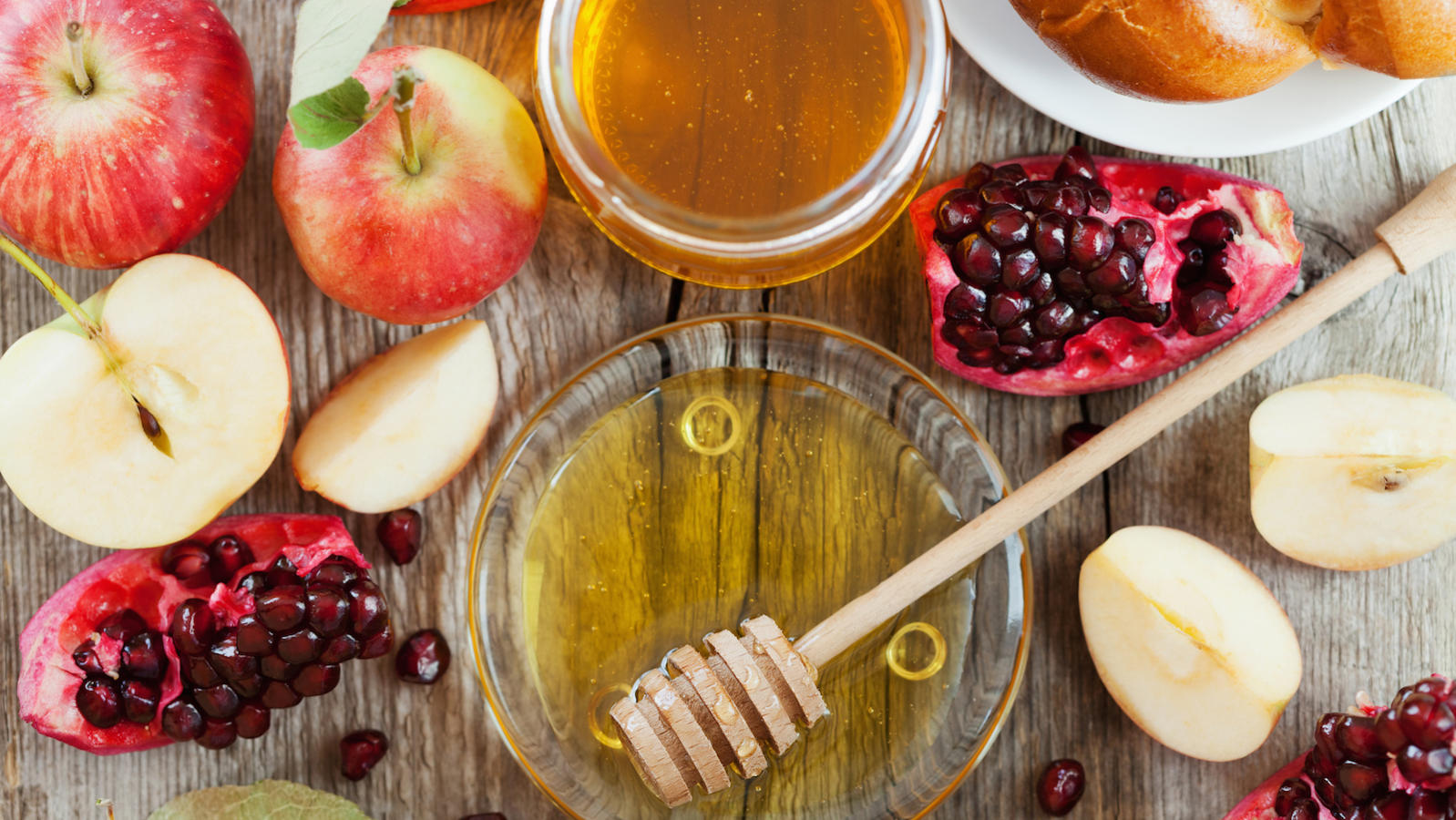Rosh Hashanah : Shanah Tovah (Have a good year)

Rosh Hashanah begins this year with sunset on Sunday, September 29 and ends with nightfall on Tuesday, October 1. Thus, it is acknowledged primarily on Monday, September 30. This is the Jewish New Year, known in Hebrew as Yom Teruah, meaning “day of shouting or blasting.”
Thus it is appropriate that a custom on this day is sounding the shofar, a hollowed-out ram’s horn. This follows the Hebrew scripture’s call to raise a noise on this day. In addition to synagogue services and other special celebrations, this day includes festive meals (among many special dishes, one symbolic food is apples dipped in honey), the point being to evoke a sweet new year. There are very exact instructions for the manner of the blasts from the shofar. The horn is blown at various instances during Rosh Hashanah prayers, with a total of 100 blasts over the day.
The origins of the Hebrew New Year are connected with the beginning of the economic year in agricultural societies of the ancient Near East. The New Year was the start of the cycle of sowing, growth, and harvest. Rosh Hashanah occurs 163 days after the first day of Passover. Since the time of the destruction of the Second Temple of Jerusalem (the year 70 of the CE),
Jewish law has the Rosh Hashanah celebrations over two days, though there are differences for various groups and cultures. This is because of the difficulty of determining the date of the new moon. The two days are considered to constitute “one long day.”
Many Jews perform the ritual of tashlikh on the afternoon of the first day of Rosh Hashanah. Prayers are recited near natural flowing water, and one’s sins are symbolically cast into the water. Some also have the custom of throwing bread or pebbles into the water, to symbolize the “casting off” of sins.
The traditional service for tashlikh is recited individually and includes the prayer, “Who is like unto you, O God … and You will cast all their sins into the depths of the sea.” It could also include certain psalms and personal prayers. It was once considered a solemn individual tradition but it has become an increasingly social ceremony practiced in groups.
Rabbi Brad Hirschfield, president of CLAL, The National Jewish Center for Learning and Leadership, connects the celebration of the New Year to community: “Rosh Hashanah is about relationships. Whether between individuals and the God in whom they believe, communities and the traditions which define them, or simply between individuals, whether any God or tradition is part of their lives, it’s all about sustaining relationships which sustain us and help us do the same for others.”
To all Jews throughout the world, have a sweet and peaceful New Year.!




Sharon Walters
Posted at 09:22h, 30 SeptemberThank you for an interesting explanation of the symbolism and rituals of Rosh Hashanah.
Peter Bisson
Posted at 17:52h, 30 SeptemberShanah Tovah, Philip!